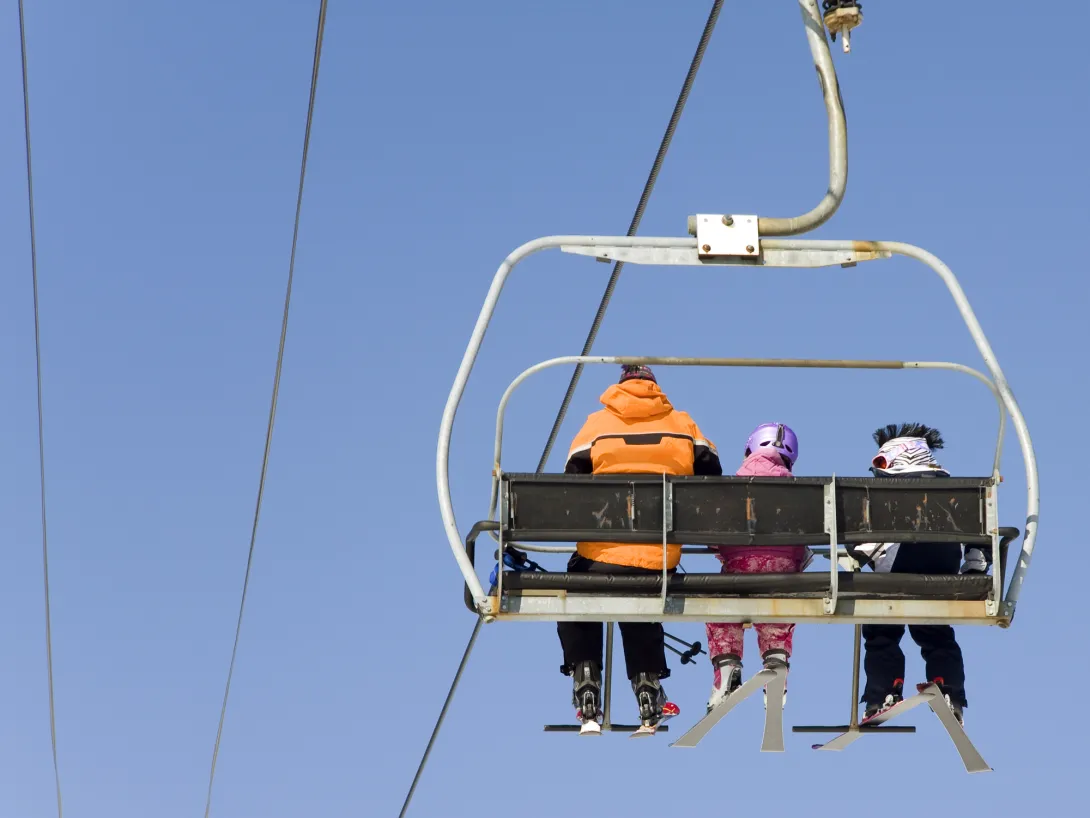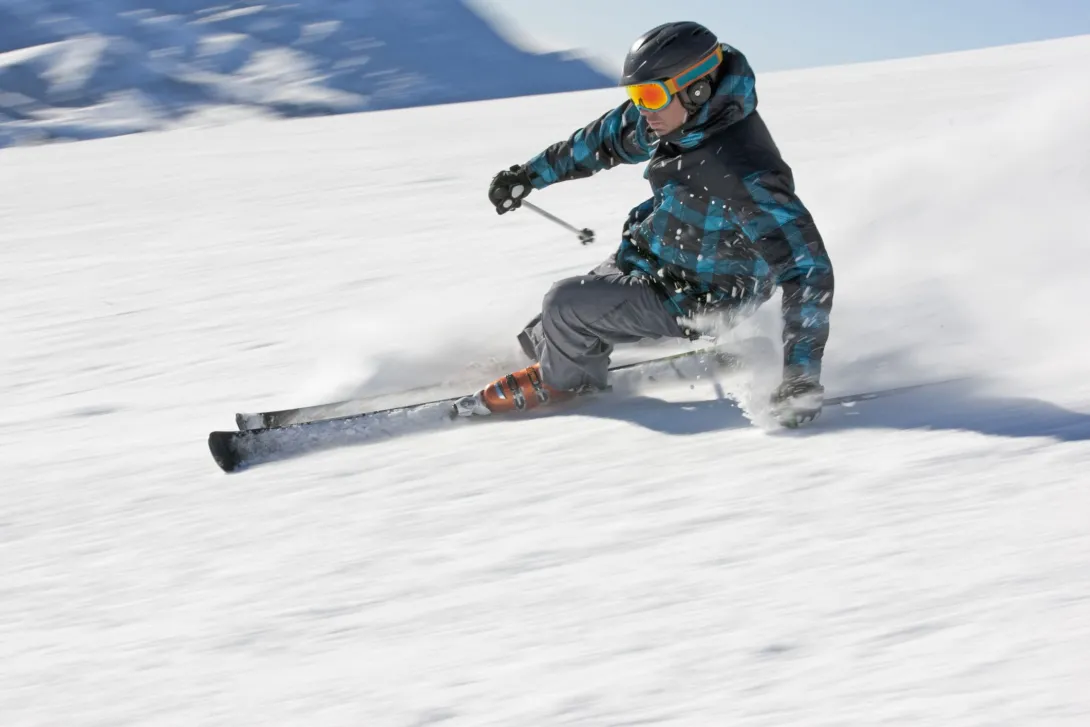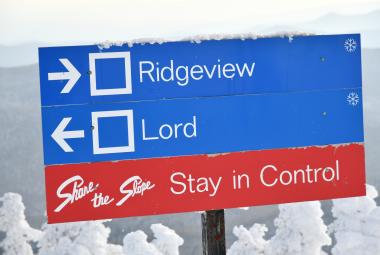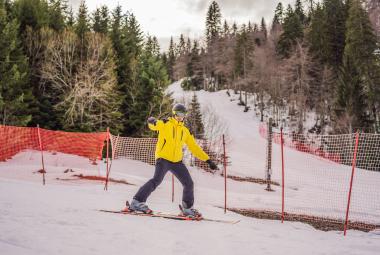I love skiing and over the years, I've noticed plenty of new skiers making mistakes they could have avoided.
I'm by no means an authority on what you should or should not do while skiing, but I've learned a few lessons over the years that I wish more new skiers knew before they hit the slopes.
Skiing is a fun sport, but like all things in life, there are a few tips and tricks that can save you time, money, or even your health.
Every winter as a kid, my parents would take my skiing. As I got older, I started going on my own and the experiences exposed a few pitfalls that I now am sure to avoid.
Here's a list of 13 very common stumbling points I see new skiers making when they start out.
Getting angry over little things

You've heard of road rage, but how about ski rage?
It never ceases to amaze me when I see someone losing their cool while skiing. Sometimes they get frustrated at someone in their group, or another skier. Whatever the reason, everyone around them notices it, and it's simply unnecessary.
I get it, everyone has moments when a series of little things creep up and it boils over. Teaching my kids to ski the first time lead to a very angry ski down the slope.
The key is to remember you're out there trying to have a good time and yelling at anyone, family or stranger, does no one any good.
If you sense your blood pressure rising over something big or small, take a break immediately. Pull over to the side of the slope, or grab a seat on a bench and take a breather.
Every time I've gotten frustrated, I've realized after a few minutes that it's really not that big of a deal and to move on. If something is truly frustrating, then I'll head back in for a break. A snack, beer, or even a nap does wonders for the nerves.
Not sharing the chair lift

This is as much a mistake as it is a faux pas, but treat the chair lift like you would a bus or train seat.
Everyone is trying to get to the top of the mountain as quickly as possible, so if the chair lift can handle more people than in your group, you're expected to make room for others.
Some chair lifts have a single rider line, which the mountain staff will utilize to fill in gaps. To that point, you need to make room and shift over when your line merges or at the loading point.
Not only is sharing a chair with others polite and considerate, it can sometimes make for some fun conversations on the lift ride up to the summit.
Not eating enough

I skip breakfast on most days, but definitely not when I go skiing.
It's super important to have enough food and drink in your system to keep you going throughout the day.
Most people have the intention of skiing all day, or at least for many hours. The reality of skiing is it consumes a lot of calories and energy to keep going and if you aren't eating and hydrating enough, you're going to hit a wall very soon.
Start off your day by having a sizable breakfast so you can carb load for the start of the day.
Then, listen to your body if it needs more energy. I like to keep a snack or two in my jacket for when I need a quick pick up.
Also, don't be tempted to try to skip lunch. It's enticing to "ski through it", but you'll pay for it later when your body starts to break down from lack of energy.
Not wearing ski socks

I'd say if there's the easiest to make mistake, it's picking the wrong socks to go skiing.
I'm willing to bet most people brand new to skiing don't think about their socks and just pick a pair of regular tube socks. Unfortunately, these people will quickly find their toes quite cold, quite quickly.
You can do a lot to warm up parts of your body while skiing, but toes aren't one of them. Ski boots are not well insulated and there's little movement of your feet while in them. This combines to make for cold feet and a miserable feeling.
What you want to do is buy a pair of ski socks. There's all sorts of ski socks out there, including wool socks.
Read more: What to Wear Skiing
Ski socks are thick socks specifically made to keep your feet warm and comfortable while skiing.
Not wearing a ski helmet

When I was a kid in the 1990s, we never wore a ski helmet, but today, I can't imagine not wearing a ski helmet.
Of course they look dorky and feel a little weird, but this is your life we're talking about.
A ski helmet protects your head and since you could potentially be skiing at a high speed, it's best to wear a ski helmet for your own safety.
If you're renting equipment, always ask for a helmet. While they may be optional from a regulation standpoint, skipping out on a helmet is playing with danger and the risk is simply not worth it.
Thinking fresh powder is the best

I remember when I was skiing at Okemo Mountain and the forecast called for a major snow storm and thinking how lucky I was to get all that snow.
Certainly fresh snow means you won't encounter any rough spots on the slopes and it adds to the euphoria of the ski experience, but there is a major difference between groomed trails and ungroomed trails.
In short, it's much more difficult to ski on fresh powder because of the extra effort required to control yourself.
Groomed trails are easier to ski on because the snow is more packed down and flat. Moreover, if you don't have wider skis for powder, you'll find the extra drag created by all that powder making everything take extra effort.
Definitely hope for a big snow storm to hit the mountain you're going to, just hope it hits a couple days before you arrive so the staff can groom it all.
Skiing too fast

There's no excuse for skiing recklessly, whether intentional or not.
Assuming your new and controlling your speed is the issue, you'll need to focus on the basics so that you can go as fast (or slow) as you desire while maintaining control.
Blazing it down the slope is dangerous for you and others around you, because high speed collisions are one of the top risks of skiing.
Safety on the slopes is paramount and skiing at a reasonable speed is the responsible thing to do.
Trying to ski more advanced trails if you're not ready

I know you want to keep up with everyone else, but trying to ski beyond your ability level is dangerous.
When you start out skiing, you'll begin with the green circle trails because these are the simplest slopes with no obstacles and a gentle slope. I think humans are conditioned to try to compete with others and when you see so many others (especially kids much younger than you) hitting the blue square and black diamond trails, you're going to start feeling inadequate.
Remember, the slope colors are there to help guide you and ensure the experience is suitable for your comfort level.
Similarly, even if you're a good skier, trying to hit the most advanced trails can be equally dangerous.

The expert trails require a great deal of experience, energy, and physical conditioning to handle it. In short, it can be exhausting to ski the black diamond slopes.
There's nothing wrong with skiing at your ability level, so give yourself time to progress. You want to be very comfortable at the level you're at before considering moving up.
A very common scenario is when someone new to skiing wants to ski with friends who are more advanced. The new skier wants to keep up with their friends and the result can be anything but enjoyable.
Skipping ski lessons

Ski lessons aren't cheap, but they are so helpful to new skiers in getting them prepared properly.
If you've never skied before, ski lessons with an instructor can be well worth the cost because of how they can assist with proper form and technique.
Read more: Do I need ski lessons for my first time?
Booking a half or full day lesson can greatly assist with the biggest stumbling block new skiers have: frustration. If you talk to someone who tried skiing once and quit, they'll almost always talk about the learning curve and getting annoyed at learning the basics.
Ski lessons are no guarantee of anything, but it sets you up for the best chance at success.
Read more: Is It Worth Getting Ski Lessons?
Stopping in the middle of the slope

Not only is stopping in the middle of the slope inconsiderate, it can be downright dangerous.
Proper ski etiquette is to pull over to the side of the slope if you intend to stop. Moreover, stop somewhere where people uphill can see you. So don't stop right below the crest of a hill.
Moreover, stopping in the middle of the slope can be dangerous. You're putting yourself and others at a greater risk of collision by being right in the middle.
Not wearing sunscreen

If you think sunscreen is only for the beach, you're going to regret it later.
It doesn't need to be hot to get sunburned. UV rays are what cause sunburn and at higher elevations, it's easier to get a sunburn.
Read more: How To Adapt To Changing Weather Conditions While Skiing
Apply sunscreen to any part of your body that will be exposed to the sun, such as your face.
Not checking the weather the day you ski

When I've chatted with people on the ski lift, it never ceases to amaze me how many people are unaware of what the forecast is for the day.
It's astounding how much the weather can change in one day, especially compared to what it looks like in the morning.
Check the forecast the day before you ski and then once again that morning.
Speaking of forecasts, check the weather forecast on the ski mountain website. The weather at elevation can very considerably from the towns around the mountain. Every ski resort has a mountain weather forecast and snow report that is updated at least once per day.
By doing this, you can be prepared if temperatures are expected to rise or fall rapidly, as well as wind. Arguably, wind is the most unexpected weather factor that can turn an otherwise lovely day into a frigid one.
Not letting the fall happen

It's difficult to describe, but when you fall (and you will fall), you need to fall properly to avoid injury.
No one wants to fall, but you can do more harm by trying to brace yourself when you fall.
Instead, keep your limbs tucked and always aim to land with your skis on the ground.







